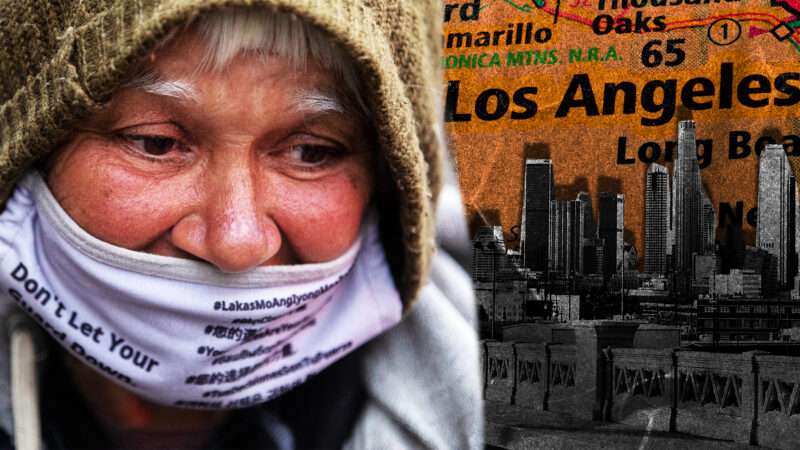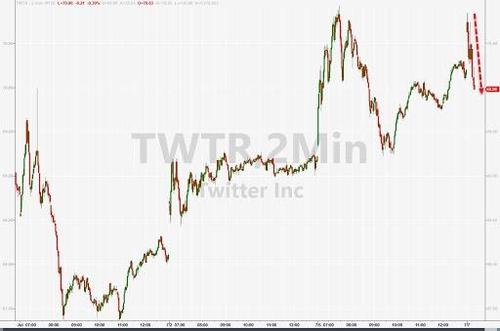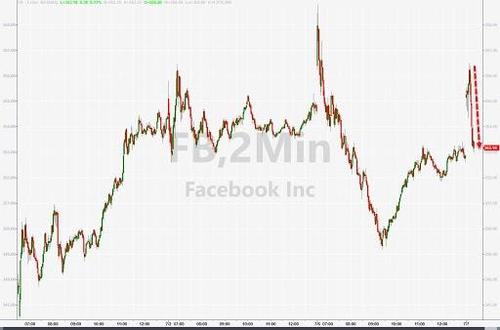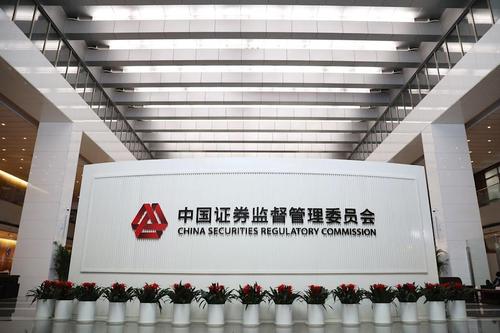Five years after Los Angeles voters approved a $1.2 billion bond measure and a countywide sales tax hike to raise another estimated $355 million annually to solve its homelessness problem, there are more people living and dying on the streets than ever before.
Many of these men and women are both frequent targets and perpetrators of violence.
Mayor Eric Garcetti (D), who did not respond to our interview request, has partially blamed this failure on the pandemic, which slowed new housing construction and limited shelter capacity. It’s true that COVID caused a surge in homelessness, but the city’s plan was already failing.
In 2019, homelessness spiked 13 percent in L.A. County.
“This [was] happening way before the pandemic,” says Deisy Suarez, the proprietor of Desuar Day Spa in downtown L.A. “There [are] tents popping up in places that we didn’t see [them] before. It’s just getting worse and worse.”
The centerpiece of L.A.’s plan was to spend the $1.2 billion raised through Proposition HHH to build 10,000 supportive housing units over a decade. Even if the government were able to pull that off, it would merely put a dent in the problem in a city where more than 30,000 people are living on the streets and sidewalks according to the 2020 homelessness count.
Five years into the 10-year plan, just 14 projects are in service. Of the promised 10,000 supportive housing units, the city has completed fewer than 700.
It would take more than 30 years to house all of the people currently homeless in L.A. county at that pace, according to a federal court order.
As the homeless population exploded, some shelter providers implored the mayor to spend more of the money on immediate shelter, mental health services, and substance abuse treatment, but Garcetti went all-in on his ambitious 10-year plan.
Los Angeles’s approach to the homelessness crisis is a series of colossal failures. The city has proven itself to be incapable of “solving homelessness,” but it could take more modest steps to help alleviate suffering and restore peace and safety to the streets. It could also bring an end to many longstanding policies that caused these men and women to end up homeless in the first place.
“A Deadly Status Quo”
In a scathing court order issued in April, U.S. District Judge David Carter said that the city’s “inaction” is “so egregious, and the state so nonfunctional” that it’s “likely in violation of the [14th Amendment’s] Equal Protection Clause.”
L.A. has the largest unsheltered homeless population in America, and ground zero is a 50-square-block district known as Skid Row—officially turned into a containment zone by the city in 1976—where the problem has escalated into a full-blown humanitarian crisis. It’s a problem that’s rooted in misguided government policies decades in the making, but Carter’s order places blame for the city’s failure to address the immediate crisis squarely at the feet of Garcetti.
Carter criticized Garcetti for failing to declare a state of emergency, which he says could’ve eliminated bureaucratic hurdles to building new housing, and for his failure to spend a significant portion of the $1.2 billion that the city has borrowed on constructing temporary shelters, tiny houses, or even 3D-printed homes.
The judge ordered the city to put $1 billion in escrow so that he can monitor how that money is spent. He’s also ordering the city to provide shelter for the more than 4,600 people living on the streets of Skid Row before the end of 2021.
But the mayor has said Carter’s order will derail the city’s plan.
“Stay out of our way,” Garcetti said during an April press conference in response to the judge’s order. “Roadblocks masquerading as progress are the last thing we need.”
And his city attorney has appealed the ruling. L.A. County is asking to be dropped from the suit altogether.
“We Can’t Tell People It’s OK To Die on the Streets”
“I wish I could say I was shocked at the pushback from L.A. County and L.A. City,” says Andy Bales, who runs the Skid Row–based Union Rescue Mission, which runs entirely on private donations. The organization shelters more than 900 people a night and moves more than 900 people into permanent housing a year, according to its most recent annual report. Bales has been a fierce critic of the city’s approach, which he says has been slow, expensive, and capable of serving only a fraction of the homeless population.
“This is a deadly status quo and people don’t just die. They die a horrific death of assaults and beatings and rapes…heat and cold and wet. It is a brutal, brutal spiral to death that we’re leaving people in,” says Bales, who’s long called for the city to redirect the funds raised through Proposition HHH to temporary, faster solutions.
But other homeless service providers and activists, and the editorial board of the Los Angeles Times, have expressed concern that Carter’s order will derail the plan to put homeless people into permanent housing by prioritizing substandard temporary shelters.
“You can’t look at a place like Skid Row and think, ‘Oh, we don’t need an immediate response.’ We need that,” says Amy Turk, CEO of the Downtown Women’s Center, another Skid Row-based service provider that helps homeless women find food, services, and housing.
“But we can’t [fund emergency shelter] at the expense of perhaps clawing back money that we’ve designated for permanent housing or not having enough for the permanent housing side,” says Turk.
Turk’s group has backed the city’s approach and owns two buildings offering permanent supportive housing in Skid Row. Downtown Women’s Center found housing for 79 women and 124 children in 2019, according to its annual report.
Turk says the goal should be to move people experiencing homelessness into permanent supportive housing, which is what Suzette Shaw had done with the help of the Downtown Women’s Center.
“People living in Skid Row are living in less than third-world living conditions. You’re always in a state of survival mode,” says Shaw, a homeless rights activist who has lived on Skid Row for more than eight years.
Shaw never slept on the streets—she lived in single-occupancy hotel rooms and shelters. And then the Downtown Women’s Center helped her find the permanent supportive housing where she now lives.
“Having my own home now and space that I can create and make my own home and having my own kitchen and slowly working to a sense of normalcy…I close that door and it’s my sanctuary,” Shaw tells Reason.
But while Shaw is a notable success story, and the Garcetti administration has claimed to have moved more than 30,000 people into permanent housing using existing stock, the growth of L.A.’s unsheltered homeless population is far outpacing new housing construction.
“It was working with Judge Carter and hearing about tiny homes [that made them] seem like a good option to add to the mix,” says Bob Blumenfield, a city council member whose district in the San Fernando Valley has a relatively small homeless population compared to the rest of L.A.
After consulting with Carter, he was able to secure funding—but not HHH money—to build 52 “Pallet shelters” with 100 beds in the parking lot behind his council office, administered by a nonprofit that will provide meals, amenities like laundry, internet access, storage, drug and mental health counseling, and 24/7 security.
Amy Turk points out that while temporary sites are cheap to build, they can be expensive to run, with one parking lot campground the city administers costing more than $2,600 a month per person.
“You can’t just set up a shelter without knowing how you’re going to get people into permanent housing,” says Turk. “People will just stay in your interim shelter for a very long time. It is more costly to run a shelter with 24-hour staffing and security.”
Temporary shelter is costly—but far cheaper and quicker to construct than permanent supportive housing, which is averaging about $566,000 per unit in L.A. The total cost of Blumenfield’s cabin community was $3.1 million, or $31,000 per bed.
“The perfect is often the enemy of the good,” says Blumenfield. “We can’t tell people that until we have all the permanent supportive housing that it’s OK to die on the streets or to live on the streets in horrible, horrible conditions.”
Blumenfield’s cabin community model is based on a similar idea launched in Riverside County last year at about a third of the construction cost per bed.
“When I spoke to people as they come in, the ability to have sort of a door to shut, four walls that surround you and really being in your own space…I think that was important to people: being in your own space because your mind can finally rest and it can start thinking on what it needs,” says Tyler Ahtonen, the program manager with City Net, the nonprofit that Riverside contracted with to run the site, which sits adjacent to a parking lot less than two miles from downtown Riverside.
Since launching in March 2020, the site with 30 units has served 160 people, moving 43 into permanent housing.
“You don’t know what’s going to happen on the street, but coming in here, I had my own space, which was a lot bigger than my tent,” says Lisa Care, who was living on the streets for two years before a City Net outreach worker offered her a Pallet shelter and eventually found her an apartment. She says the privacy and security offered was enough to bring her off the street when the offer of a group living shelter wouldn’t.
“This place is like living in a one-bedroom mansion or something as opposed to the shelter,” says Care. “I’d take my chances on the street before I’d go back to the shelter.”
Riverside’s homeless solutions officer, Hafsa Keika, says that while she believes more permanent supportive housing is what will ultimately end homelessness, transitional options like Pallet shelters actually help achieve that goal.
“We saw that more than 80 percent [of homeless people] indicated that if they had an opportunity to have their own space, they would accept shelter,” says Keika. “Some of the individuals who maybe struggled with getting into permanent housing were able to find this as a pathway. They’re able to learn the life skills, sit with our case managers, really learn the necessary communication to be able to get into permanent housing and have that warm handoff…and so by having the shelter and the shelter case management, they’re able to get ready for that step.”
There are even lower-cost options used in cities like Austin and Mexico City, where there are 3D-printed homes for homeless people that were produced by a startup for $4,000 in 24 hours.
And in 2016, Reason profiled a local artist constructing tiny homes for the homeless for only $1,200 apiece. Instead of partnering with him and offering land for the homes, the city seized and impounded them.
The more than a billion dollars that Los Angeles has borrowed could be used to build shelters like this, but the city government has failed to allocate much of the money to faster, temporary solutions.
And local public radio affiliate KCRW has documented instances of corruption surrounding the city’s current homelessness housing plan, with developers receiving taxpayer money to build homeless housing reselling the properties to themselves for millions in profit.
Carter notes that “the improper relationship between City Hall and real estate developers is neither isolated nor new.”
“The FBI has been investigating possible corruption in City Hall since 2017,” continues Carter, “a probe that has led to the prosecution of real estate consultants, political fundraisers, and even, most notably, former Councilmember Jose Huizar, whose council district included Skid Row. In June 2020, Huizar was arrested by federal agents for using his position to cover up illegal activities…”
“[The city has] said, ‘Let’s keep the status quo and allow the developers to continue because they are carrying it out in good faith, and they’re doing it well,” says Andy Bales. “Well, no, there’s evidence that it’s not being done well… and it’s not being done in good faith.”
“You Don’t Have a Right to Every Park Bench”
“I’m a believer in the right to housing, but at the same time, you don’t have a right to every park bench,” says Blumenfield. “The city has an obligation to protect its public right-of-ways. If someone is homeless, that is a tragedy, and we need to work on that and get them into some form of transitional housing.”
But even if the city quickly were to build more emergency shelters, not all the men and women living on the streets of Skid Row would necessarily abandon their sidewalk encampments to go live in them.
“I don’t want to go live in [a] shelter,” says Willie “Bishop” Smith, a Skid Row resident. “I might as well just go back to jail.”
In 2006, a year after a homeless woman was beaten to death on the streets of Skid Row, Los Angeles Police Department Chief Bill Bratton launched the “Safer Cities Initiative” and sent 50 police officers to patrol the neighborhood and issue citations for minor infractions.
Proponents pointed out that in just a few months the number of people sleeping on the streets was cut almost in half. “We’ve broken the back of the problem,” said Bratton.
But homeless activists said that many of those people just dispersed to other parts of the city and that the city was criminalizing homelessness. The Garcetti administration ended the program in 2015 when an LAPD officer fatally shot a homeless man.
“I don’t think the criminalization side is reasonable at all,” says Turk. “Once we start incarcerating people for quality of life issues, then we’ve just increased our costs with the carceral system. We’ve re-traumatized people. And I don’t think there’s a moral reason to do that.”
But Elizabeth Mitchell, an attorney representing the group of downtown business owners, residents, and homeless people who sued Los Angeles, known as the LA Alliance for Human Rights, disagrees with Turk’s characterization.
“The idea that this is criminalizing homelessness is an absolute red herring. It’s a total myth that you can’t both be compassionate and regulate public spaces at the same time,” says Mitchell.
She points out that when Carter issued an order in Orange County allowing city governments to clear encampments, they did so without arrests by sending social workers to offer shelter and mental health and drug treatment services and inform those living there that they had two weeks to move their belongings from the area.
“If you look at this approach that we are advocating for, we have sheltered over 4,000 people without a single citation or arrest. So I don’t see how that could possibly be criminalization,” says Mitchell. “Everybody agrees that law enforcement should be an absolute last resort, but regulation of public spaces needs to occur again for everyone.”
And there’s a danger that law enforcement could take a more aggressive approach if the city fails to act.
L.A. County Sheriff Alex Villanueva sent a team of deputies out to Venice Beach in mid-June without consulting the city council and vowed to start clearing encampments in the coming weeks with or without city approval.
Several weeks later, on July 2, city council approved new prohibitions on camping near shelters, parks, elementary schools, and entrances to homes and businesses.
“Literally the only goal is to get people sheltered and off of the street as fast as possible throughout Los Angeles,” says Mitchell. “What we can’t accept is people dying on the streets while the city bureaucracies turn out overpriced housing that helps too few.”
The suit argues that the damage done to downtown residents and entrepreneurs by the city’s incompetence constitutes a taking of property. Deisy Suarez, the proprietor of Desuar Day Spa in downtown L.A., agrees.
“We have customers that refuse to come inside because they just completely don’t feel safe,” says Suarez. “It’s just so hard because now we have appointments that were booked and now they’re empty.”
Suarez is named in the suit, as is her brother Leandro, a Navy veteran in a wheelchair who has often been unable to navigate around encampments blocking sidewalks, which partially forms the basis for an Americans with Disabilities Act claim in the lawsuit.
“He had a lot of encounters with people that were aggressive. People wouldn’t move, wouldn’t give him the path. A person took out a stick and threatened to hit him.”
She also says her two young children witnessed an attack on her husband walking around the area, causing her to move the family 30 minutes outside of the city.
“That’s when I had lost it, and I had a meltdown,” says Suarez. “I was like, ‘I gotta get my kids to a safer place. This is not the environment that I want my kids to grow.'”
Between 2018 and 2019, violent crimes perpetrated by homeless suspects increased 22.5 percent, with a 48 percent increase in Skid Row and downtown L.A. Violent crimes against homeless people increased 19 percent citywide in the same period.
“I’ve seen people get beat up, run over, tents being put on fire. I just can’t believe what I see. It’s just unfathomable. It’s really difficult to watch,” says Harry Tashdjian, co-owner of an upholstery supply business in Skid Row where he says he’s seen conditions deteriorate on the block outside his building.
“We have vendors that fly in from all over the world…and they just can’t believe what they see when they come to Los Angeles,” says Tashdjian. “I’ve never heard once a customer walk in and say, ‘Yeah, this time it got better.’ It’s constantly getting worse and worse and worse.”
Both Tashdjian and Suarez trace the decline that began in 2016 to a federal court injunction prohibiting police from seizing property people are storing on the sidewalk or street.
“Over the last 20 years…through these series of decisions and settlements, it’s had a complete chilling effect on city and county officials,” says Mitchell.
Federal court rulings and settlements have shaped homeless policy not only in Los Angeles but nationwide, with the February 2021 Boise v. Martin settlement making clear that cities couldn’t clear encampments without offering “adequate shelter,” a term that’s never been precisely defined.
“So the question was…is there a way that we can use the courts to do the opposite, to unhandcuff the city of Los Angeles, to unhandcuff the county of Los Angeles and the officials to really do what they say they want to do, which is solve this comprehensively,” says Mitchell.
She says Carter’s order gives the city an opportunity to bypass the morass of settlements and begin to move people off the sidewalks and streets and into shelters. But instead of embracing that opportunity, Garcetti has appealed the decision.
“The mayor is just kind of gaslighting us,” says Suarez. “I absolutely think that he is a disgrace. He is a mayor that has failed us. His usage of the funds from [Proposition] HHH is just unbelievably ridiculous.”
Bales says that the appeal will only lead to more suffering and death.
“Our city, our county, [the] L.A. Times…have all pushed back and fought the judge and made disingenuous claims that we can’t put a roof over everybody’s heads in three months. Well, I can guarantee you if you appeal and take it to the 9th Circuit Court and to the Supreme Court, yeah, you can’t get it done.”
A Supply and Demand Problem
A high percentage of L.A.’s homeless population has mental illness and substance abuse problems, and L.A. County has concluded it has fewer than half the available mental health beds necessary to serve its population.
The judge’s order directs the city and county to spend more of the funds to expand mental health and substance abuse services within 90 days.
“[The county’s] substance abuse and mental health services are atrocious. So by requiring the county to actually treat people who need treatment…it’s life-changing,” says Mitchell.
But there’s also a significant percentage of people who aren’t severely mentally ill or addicted to drugs at the time they become homeless, and living on the streets likely exacerbates mental health issues.
Some people who are living at the margin are pushed out of housing by a combination of high rents and inability to navigate the housing assistance bureaucracy.
The city exacerbated this problem on Skid Row in the 1950s and 1960s by condemning and demolishing half of the existing single-room occupancy hotels that housed many of the neighborhood’s extremely low-income residents.
UCLA Economist William Yu is the latest researcher to find a strong correlation between high housing prices and homelessness in a survey of American cities.
California is home to some of the least affordable urban housing markets in the country, including the L.A. metro area, according to the U.S. Census Department’s American Community Survey. A county survey found that 60 percent of newly homeless people cite economic hardship as the leading factor in their lack of housing and that two-thirds became homeless while living in L.A. County.
The approach of local and state officials has largely been to promote measures like rent control and mandating low-cost housing in new construction.
But market urbanists have long said that housing is simply too expensive to build because of zoning, permitting, and onerous overregulation.
City leaders maintain that their involvement in real estate development remains essential to tackling housing affordability.
“It’s not simply a supply and demand issue in the sense that we’re seeing supply go up, but it tends to often be this luxury housing,” says Blumenfield.
But a Journal of Urban Economics study of the Bay Area found that “local land use regulations are closely linked to the value of houses sold.” A Brookings Institution study of California found “cities with less restrictive zoning and large populations issued more multifamily permits,” and a Federal Reserve study found that in metros where demand for housing is high, more regulations correlated to “almost double the increase in housing prices.”
Even regulation meant to directly address the problem by mandating affordable housing caused prices to rise 2 to 3 percent faster, according to a 2009 HUD study.
Since the housing market’s structural problems won’t be fixed anytime soon, the homeless population is likely to keep growing.
And Mayor Garcetti may be headed out the door after reportedly being offered an ambassadorship to India from the Biden administration. But his successor will have to decide whether to continue on the course he’s set by fighting a legal battle, while spending taxpayer money on six-figure permanent housing units, or to shift course in favor of cheaper, faster emergency shelters to more immediately address the deteriorating conditions in the city’s public spaces.
Los Angeles appears to be incapable of delivering adequate housing on its current path, which is why Judge Carter ordered the city to offer some form of shelter for everyone on Skid Row by October. The 9th Circuit overrode that order on June 10 pending an appeal to be heard on July 7.
“Humans weren’t meant to live without a roof over their heads,” says Bales. “It becomes very survival of the fittest and very violent…It’s beyond a disaster. And yet the officials seem to be allowing it to get worse rather than intervening.”
Carter sees the current situation as not only a failure of current city leadership but a result of decades of government neglect and abuse, starting with the city creating and sustaining the squalor of Skid Row by making it a containment zone in 1976, using eminent domain to seize homes in poor communities for highway construction, and driving up housing prices through exclusionary zoning, blighting old properties and excessive permitting.
These are all policies that he says were “designed to segregate and disenfranchise,” the costs of which have fallen disproportionately on black Americans who make up 42 percent of the homeless population despite being only 7 percent of the city population.
“People want instant solution to homelessness, but you’re talking about 400 years of racism that has contributed to homelessness. So how do we undo that overnight is the big moral question of our time,” says Turk.
Bales says that the city only continues to perpetuate these harms by dragging its feet when offered a path forward.
“All of the housing that we could possibly do would be the correct response,” says Bales. “How can you say a judge is slowing me down when we’ve developed 641 very expensive, slow-to-develop units? All that the city and county are doing is building the case against themselves for not wanting to address homelessness on Skid Row.”
Produced and edited by Zach Weissmueller; camera by Benjamin Gaskell, Paul Detrick, and Weissmueller; additional graphics by Calvin Tran and Isaac Reese.
Photos: David Crane/ZUMA Press/Newscom; Sarah Reingewirtz/ZUMAPRESS/Newscom; Image of Sport/Newscom; Image of Sport/Newscom; Dylan Stewart/Image of Sport/Newscom; Caroline Brehman/CQ Roll Call/Newscom; Armando Arorizo/ZUMA Press/Newscom; Sarah Reingewirtz/ZUMAPRESS/Newscom; KYLE GRILLOT/REUTERS/Newscom.

from Latest – Reason.com https://ift.tt/2TNmXwa
via IFTTT















